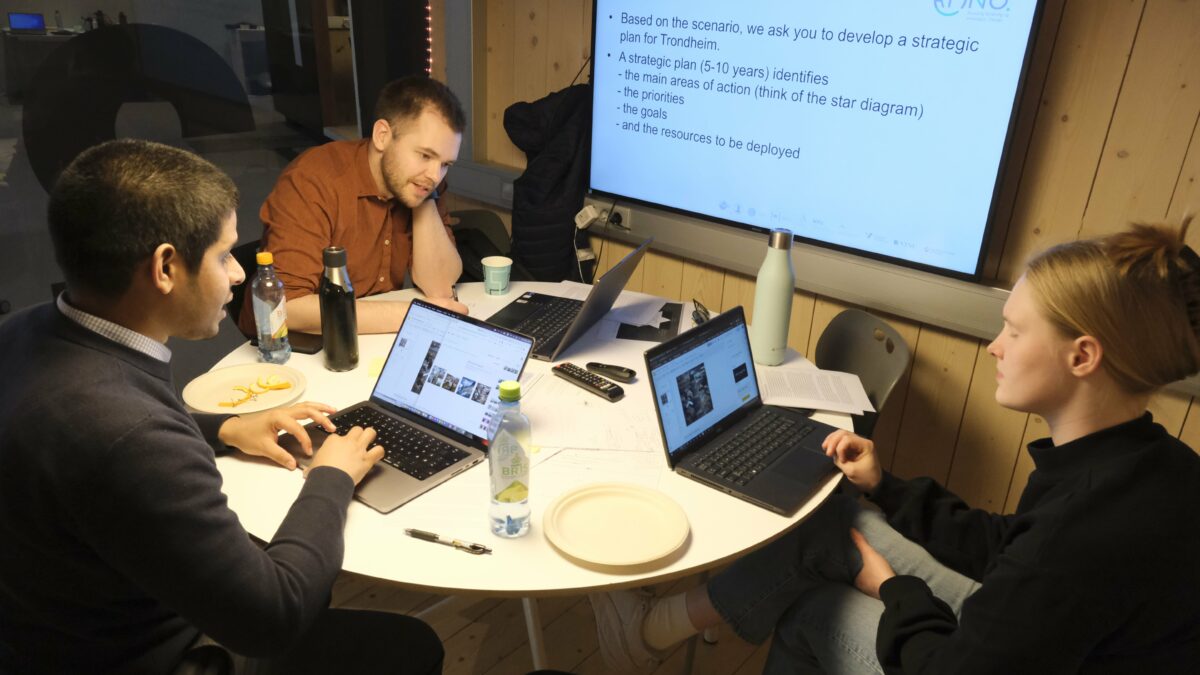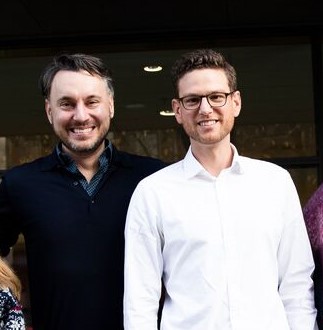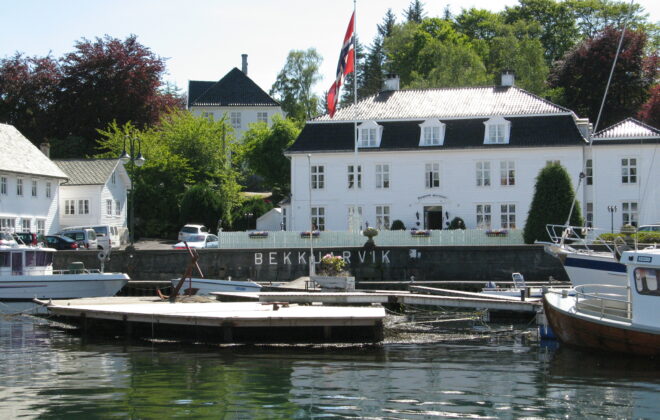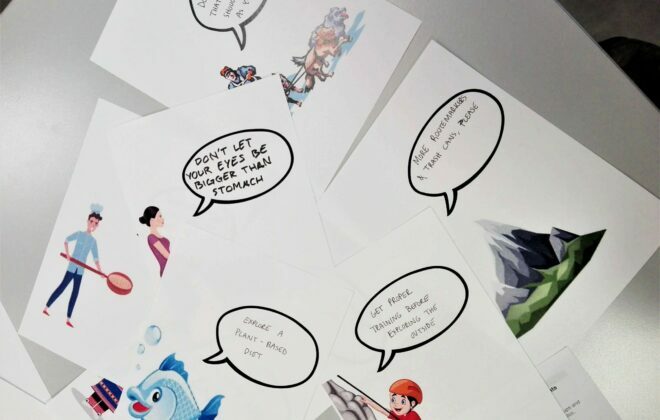The first AFINO hackathon
Hackathon is a newcomer in AFINO context. Read how the first implementation went.
The first AFINO Hackathon was held 18th April 2023, in Trondheim.
In this interview, Giovanni De Grandis (Centre coordinator and leader of the AFINO pilot projects), Natalia Murashova (Research Assistant, AFINO) and Tora Bonnevie (Sustainability Coordinator/researcher, NTNU) gives their reflections on the event. Questions are asked by Eva H. Murvold (communication advisor, AFINO).
Eva: Giovanni, last week the first AFINO hackathon took place, what was the context of the hackathon?
Giovanni: The hackathon was part of the Sustainable Healthy Futures pilot project: a collaboration between AFINO and NTNU Health. In particular it was the first event in the part of the pilot called “rethinking health in society”. Health is a major topic, because it is a very large area for public services, it is the fourth largest industrial sector and it is obsessively present in the media and in the awareness of people. But this huge sector is struggling on many counts. Thinking about the sustainability of health forces us to think about the ever growing costs, the mounting dissatisfaction among health workers and patients, and the considerable environmental impact of the health sector. So, we want to challenge people to think about different ways in which society can honour health, and also about the limits of health: disease, disability and death.
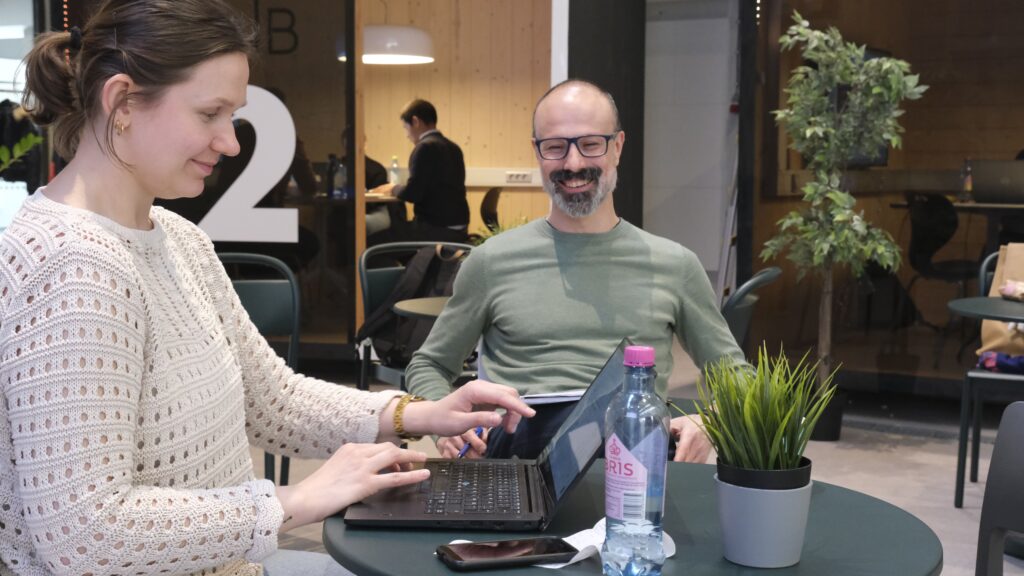
Eva: Natalia, how did you come up with the idea of a hackathon?
Natalia: I have always been supporting student engagement in research projects and collaborations. In my opinion, researchers and professionals in the field should use every opportunity to listen to the reflections and hopes of the students, because sometimes they can come up with a fantastic idea which can transform existing practices. That is why for me it was important to involve students in this Pilot project and a hackathon was the best option for doing it.
Eva: How did you organise the event and recruit participants?
Natalia: The structure of a hackathon helps students to work in smaller groups and use all their experiences to solve the problem, or develop a strategy for a future scenario in our case. Therefore, our main goal was to create the atmosphere to boost creativity and unorthodox thinking. I think that we managed well to give the right inputs and inspire participants. Due to the lack of undergraduate students in the AFINO network in Trondheim we struggled a little with recruiting the participants, but in the end the hackathon turned out the way no one expected in terms of fascinating ideas and valuable discussions.
What is a hackathon? Originally, hackathons emerged as events where computer programmers came together to attempt to solve a problem in a limited time. They then became an instrument to promote quick problem solving and innovation. They often took a competitive character: many small teams competed to provide the better solution. Eventually, they moved beyond software engineering and are now a popular format for bringing together people to address a problem and propose a solution.
We have used the format quite freely. We did not have a problem to solve, but we tried to elicit new and sustainable ideas for health in society. So, we invited participants to propose policy strategies for an unfamiliar future scenario.
Eva: Giovanni, why did you use a future scenario?
Giovanni: We want to encourage public debate about healthy ways of dealing with health and its limits. The future, especially the non-immediate future, is a powerful approach to think differently and to expose and challenge our assumptions and the poverty of our social imagination. By projecting our imagination into the future, we have to prepare for the unexpected, for discontinuities that make our current ways and mindframes impossible or inadequate. Structured future thinking reveals that much of what we do is based on tacit and inadequate assumptions about the future. More reflective thinking about the future changes the options that we see open to us. So, I prepared a scenario for 2055, depicting a very different world in which the current approach to health is not possible.
Eva: What were you hoping to get from the participants and did you actually get it?
Giovanni: I wanted to force participants to think not about incremental innovation, but about new and sustainable ways. The scenario was designed to shock. It depicted a situation in which modern healthcare and medicine are impossible. Furthermore, the constraints brought by the scenario were meant to make sustainability almost inescapable. So, I wanted new ideas about the big picture, I mean about how society could take care of health and disease differently.
I think that it worked fairly well. The participants took up the challenge and came up with some original ideas. However, as humans we tend to fall back on our habitual ways of thinking. In such a short exercise, this temptation needs to be counteracted by strict constraints. We could have helped them by specifying their task more strictly.
Eva: Tora, you introduced the participants to sustainability, attended the whole event and participated in the jury to assign the prize. What was your overall impression of the event?
Tora: I was really excited about this event. I am here because of my engagement with sustainability and health, which is a complex and sometimes overwhelming topic to work with – it can be difficult to spark good discussions without sticking too much to the present, or to be too discouraged by the prospects. The future scenario tossed us – participants and well as facilitators – into a different mode of thinking. I found it very inspiring to see what the students could come up with in such a short timeline, faced with a rather challenging task. And on top of that, keep up a constructive mood (that was at least my impression)! For my part, the event seeded thoughts that kept evolving also after the event – was it like that for the others as well? I would be curious to learn more about how participants experience such exercises!
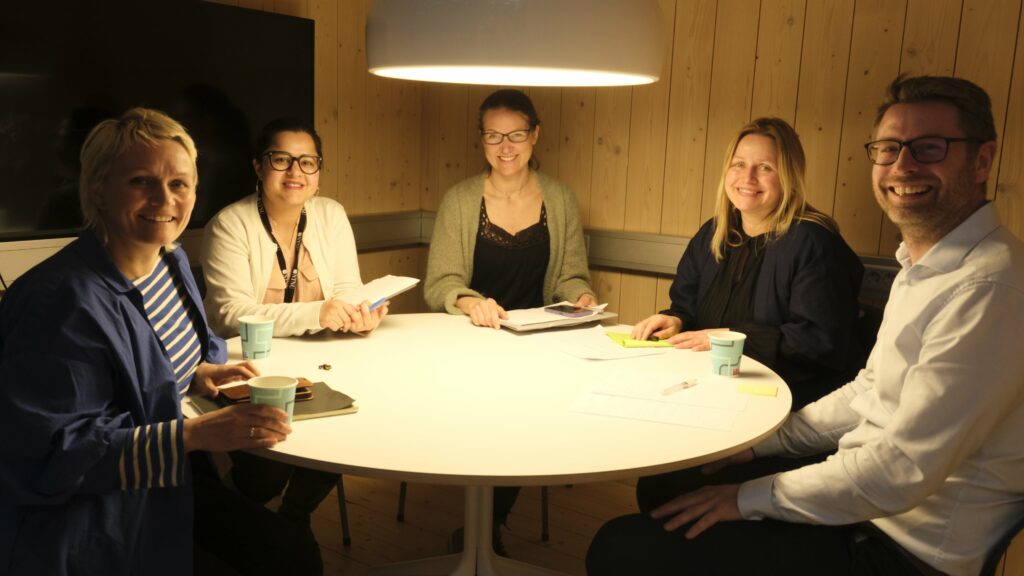
Eva: Do you think that using the future and future scenarios can help people to see what sustainability requires and to change our thinking frames?
Tora: I really do. Future thinking and anticipatory competency are often brought up as tools for education and work for sustainability, but this Hackathon was my first experience with this. As a cognitive neuroscientist am curious about the cognitive processes and mindsets that can facilitate progress towards deeply sustainable solutions. Future thinking, which can be done in different ways, may facilitate flexible viewpoints, and unite analytical thinking, creative thinking and emotions in refreshing ways. This event encouraged me to further explore future thinking approaches to foster the kind of discussions we need to have about solutions for the future.
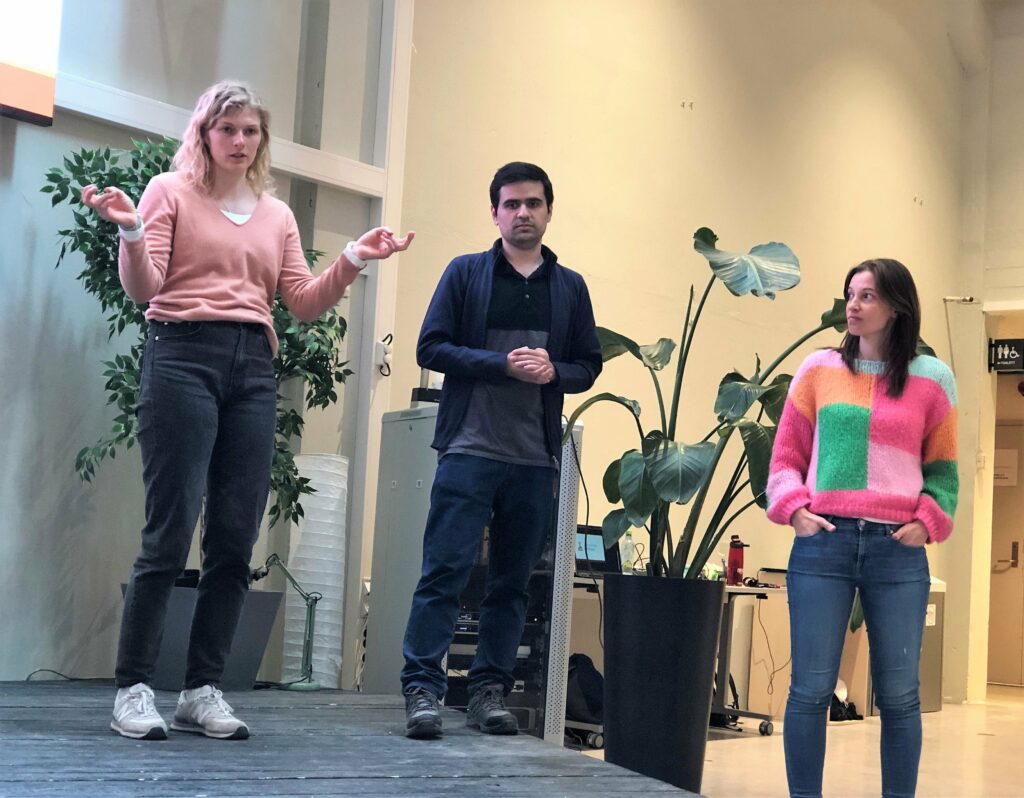
Eva: Natalia, you did collect some feedback from the participants, right? What were the most interesting and surprising comments?
Natalia: It was nice to hear that our hackathon met the expectations of all the participants. Among the most valuable learning experiences, participants mentioned practising creativity together with people from different fields of study. As for the challenge, they mentioned the scenario itself and the struggle of coming up with sustainable solutions in the context of limited resources. Overall, I got an impression that all students enjoyed collaborative work during the hackathon even if it seemed challenging in some parts.
Featured image: Groupwork at the hackathon.
All photos: Eva H. Murvold.

